Coliseo Villavicencio
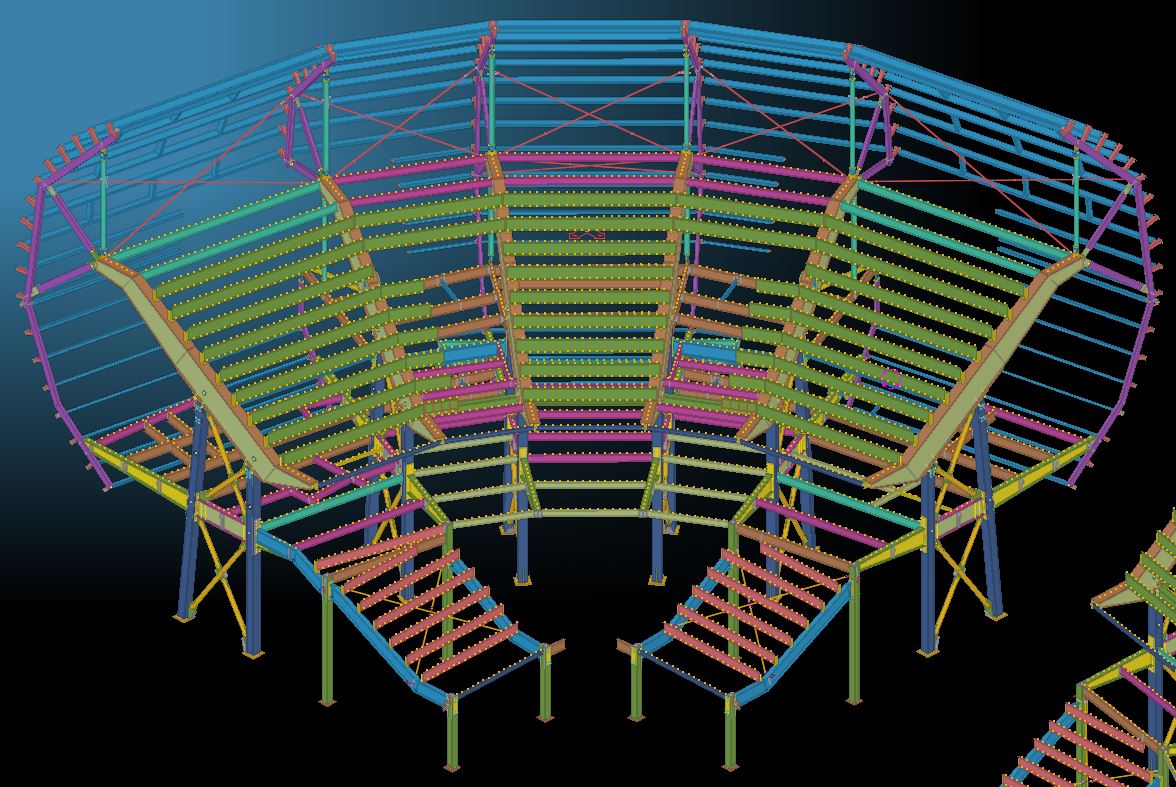
| Kategorie | Kleine Projekte |
|---|---|
| Jahr | 2021 |
| Land | Colombia |
| Organisation | INDUSTRIAS DEL HIERRO S.A |
| Verfasser | INDUSTRIAS DEL HIERRO S.A |
| Mitverfasser | INDUSTRIAS DEL HIERRO S.A |
| Auftraggeber | Agencia para la infraestructura del meta |
| Ort des Bauwerkes | Municipio de Villavicencio en el departamento del meta |
| Tags |
El Coliseo Villavicencio
El Coliseo es una estructura de dimensiones:
Ancho: 60 m.
Largo: 70 m.
Altura: 25 m.
Con un peso total de aproximadamente 1800 toneladas, conectadas por al menos 47000 tornillos; con una duración en modelación total de 12 meses, donde se inició en la creación de un modelo estructural desde cero y se terminó en la generación de al menos 890 planos de fabricación, 117000 partes y 45000 conjuntos.
Ingeniería
El proyecto consta de una estructura principal para soportar la cubierta
en teja sanduche, dicha estructura está compuesta por columnas arriostradas que amarran cada uno de los niveles inferiores del coliseo, 2do piso, gradas superiores y cubierta. Estas columnas están conectadas entre sí por una vida de rigidez que garantiza la estabilidad del anillo perimetral bajo fuerzas sísmicas tangenciales
Dado que la forma del coliseo motiva a que la estructura no se comporte como una estructura tradicional, donde priman los desplazamientos en ejes cartesianos, sino que su comportamiento bajo cargas sísmicas motiva los desplazamientos principales en coordenadas polares, era muy importante este amarre perimetral que aportaba la rigidez necesaria para controlar las derivas en sentido tangencial.
Adicionalmente se usaron dos cerchas principales en cada dirección cartesiana, cerrando el sistema de cubierta para movimientos radiales y generando la estructura de soporte para las cerchas de techo.
Para el sistema de graderías se usaron pórticos radiales arriostrados DES, más una envolvente que cumple la función de ser la estructura de soporte principal de la fachada y a la vez soporta una losa perimetral que existe entre la cubierta y la fachada.
La simetría en la geometría del proyecto permite desarrollar un sistema estructural
que presente un buen comportamiento ante las diferentes solicitaciones de carga.
Equipo de trabajo
1 persona a cargo
2 modeladores
5 dibujantes
Programas utilizados
• TEKLA Structures para la realización del modelo y los planos de fabricación, diseño, partes y montaje.
• STRUMIS como gestor de información, para minimizar los gastos generales y los costos, maximizar la productividad y la rentabilidad.
The Villavicencio Coliseum
Dimensiones:
Width: 60 m.
Length: 70 m.
Height: 25 m.
With a total weight of approximately 1800 tons, connected by at least 47000 bolts.
The total modelling time was 12 months. Starting with the creation of a structural model from scratch, followed with the creation of at least 890 fabrication drawings, 117000 parts and 45000 assemblies.
Engineering
The structure is to support the Coliseum’s roof, with a type “Sandwich” roof cladding material.
The main elements of the structure are the braced columns that tie together each of the lower levels of the colosseum, 2nd floor, upper terraces and roof. These columns are connected to each other by a rigid beam that guarantees the stability of the perimeter ring under tangential seismic loads.
Is to be noted that unlike traditional structures, where the main displacements under seismic loads are presented at the cartesian axes, the shape of the Coliseum leads to a polar behavior. Thus, the perimetral tying up was crucial to provide the necessary stiffness to control tangential drifts.
Additionally, two main trusses were used in each Cartesian direction, tying up the roof structure and controlling radial movements as well as providing support to the roof trusses.
Special braced frames were used radially to support the terraces systems and also a perimetral frame was used to support for the façade and at the same time to support a perimetral concrete slab located between the roof and the facade.
The geometric symmetry of the structure allowed to develop an efficient structural system that is able to control the different load demands.
Team
1 Manager
2 Modelers
5 Drafting people
Programs used
• TEKLA Structures for modelling and for design, fabrication, parts and erection drawings.
• STRUMIS as an information manager, to minimize overhead and costs, maximize productivity and profitability.

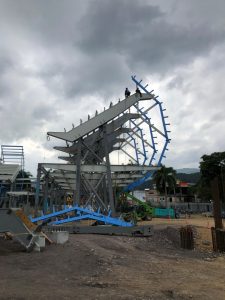

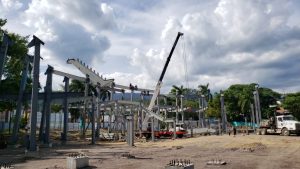
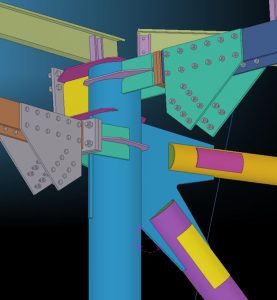


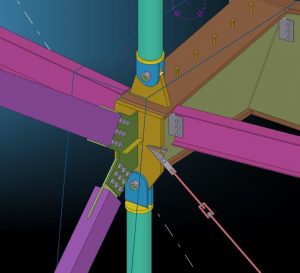
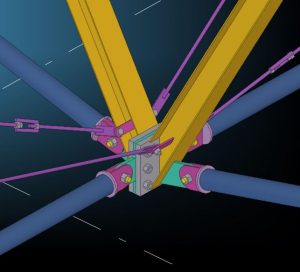




excelente proyecto
Espectacular! Un gran trabajo!
Impresionante proyecto.
Luis Horacio Restrepo!!! Lo diseño y calculo!!!! Mis respetos Doctor!!!!
Excelente
Una construcción muy innovadora para nuestra ciudad Villavicencio.